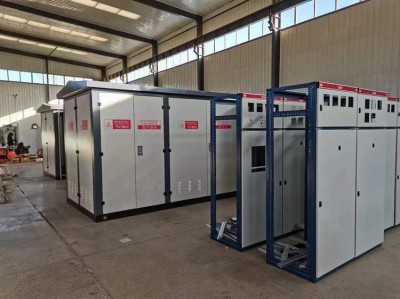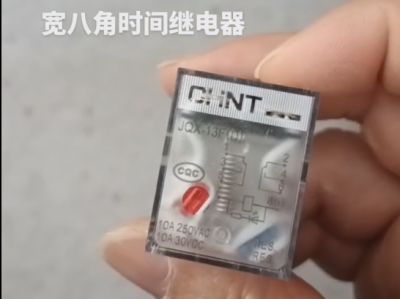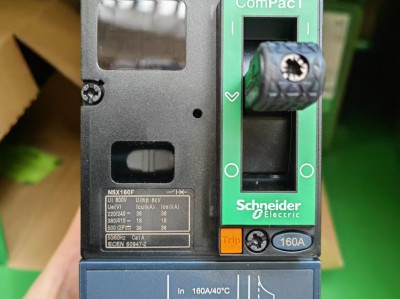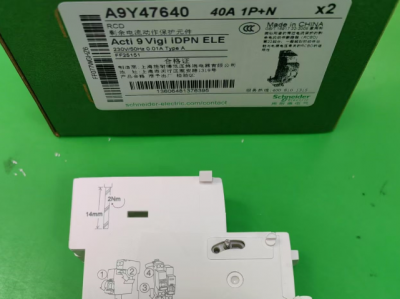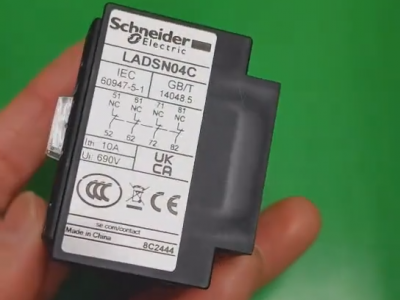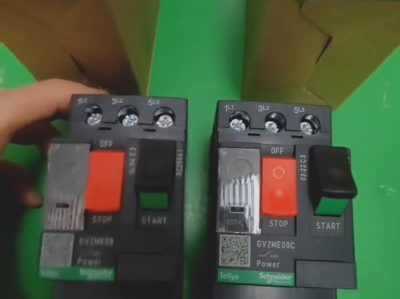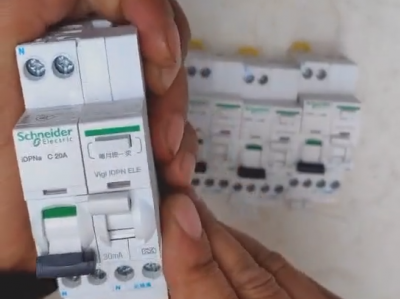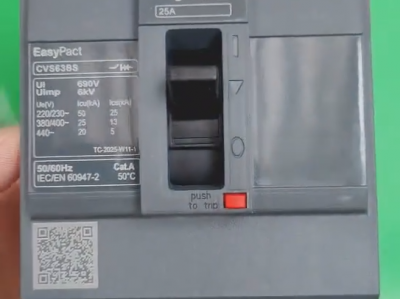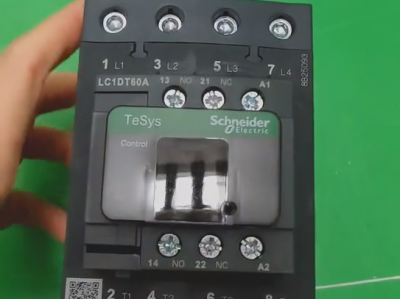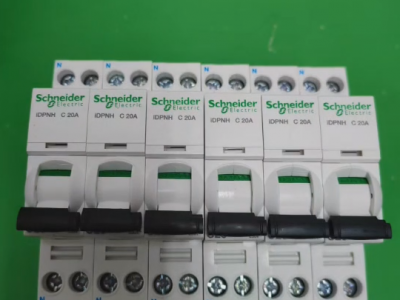Chint Leakage Protection Switch NEG3-62030
Product description
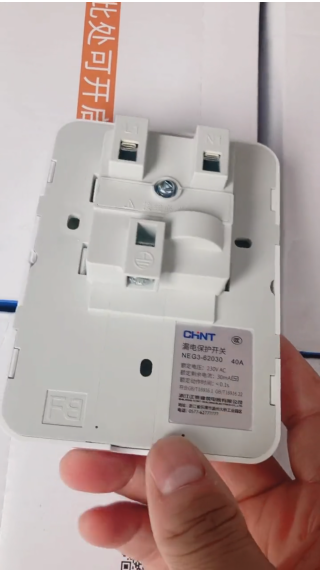
Detailed Introduction to Chint Leakage Protection Switch NEG3-62030
- **Basic Information*CHNT NL1E - 63A circuit breaker *
- **Model**: NEG3-62030, belonging to Chint's NEG3 series of leakage protection switches, suitable for various scenarios such as households and commercial environments. It is particularly commonly used for leakage protection of high-power appliances like air conditioners and electric water heaters.
- **Rated Current**: Typically 40A (subject to the specific product label), which can meet the power demand of high-power appliances in general households, such as 3-horsepower cabinet air conditioners.
- **Rated Voltage**: 230V~, suitable for the common single-phase AC power supply system in China.
- **Product Features*Chint NXBLE-40C6 residual current circuit breaker (RCCB)*
- **Leakage Protection Function**: When leakage occurs in the circuit, it can quickly detect the leakage current and cut off the power supply in an extremely short time, effectively preventing accidents such as electric shock and electrical fires. Generally, the operating current is usually 30mA, and the operating time does not exceed 0.1s, complying with relevant safety standards to provide reliable protection against electric shock for the human body.
- **Overload Protection Function**: Monitors and protects against overload currents in the circuit. When the current in the circuit exceeds the rated current for a certain period, the leakage protection switch will automatically trip to cut off the power supply, avoiding damage to wires and electrical equipment caused by long-term overload operation and extending the service life of electrical equipment. Chint NXR series thermal overload relays price
- **Short-Circuit Protection Function**: Instantly cuts off the power supply in case of a short-circuit fault in the circuit, preventing serious damage to the circuit and electrical equipment caused by short-circuit current, and effectively protecting the safety of the entire electrical system. CHINT circuit breaker price
- **High Sensitivity and Reliability**: Adopts advanced detection technology and high-quality electronic components, with high sensitivity and reliability. It can accurately detect various leakage, overload, and short-circuit faults and respond in a timely manner, reducing the possibility of misoperation and failure to act.
- **Convenient Installation and Use**: The product design complies with relevant installation standards, usually using rail-mounted installation for quick and easy operation and maintenance. It is also equipped with a test button, allowing users to regularly press the button to check whether the leakage protection switch is in normal working condition.
- **Application Scenarios**
- **Household Power Protection**: Can be installed in household distribution boxes as the main leakage protection switch to protect the entire household's power lines; it can also be used in the socket circuits of each room or high-power appliance socket circuits, such as air conditioner sockets and electric water heater sockets, to provide safety guarantees for household power use.
- **Commercial and Industrial Sites**: In some small commercial sites such as stores and offices, as well as in some small equipment and power circuits in industrial production, Chint leakage protection switch NEG3-62030 can also be used to provide leakage, overload, and short-circuit protection, ensuring the normal operation of electrical equipment and personnel safety.
- **Installation and Usage Precautions**
- **Installation Requirements**: The installation of the leakage protector should comply with the manufacturer’s product instructions, fully considering the power supply line, power supply mode, supply voltage, and system grounding type. During installation, the neutral line and protective line must be strictly distinguished. The neutral line of a three-pole four-wire or four-pole leakage protector should be connected to the leakage protector. The neutral line passing through the leakage protector must not be used as a protective line, and must not be repeatedly grounded or connected to the exposed conductive parts of equipment; the protective line must not be connected to the leakage protection device.
- **Correct Wiring**: When the leakage protector is marked with the load side and the power supply side, the circuit should be installed as specified, and reverse connection is prohibited. When installing a leakage protector with short-circuit protection, it is necessary to ensure sufficient arcing distance in the direction of arc ejection, and the size of the arcing distance shall be in accordance with the regulations of the leakage protector manufacturer.
- **Regular Inspections**: After installation, the test button should be operated to check the working characteristics of the leakage protector, and it is only allowed to be put into use after confirming normal operation. During use, the test button should also be pressed regularly for inspection to ensure that the leakage protection switch is always in normal working condition. At the same time, pay attention to observing whether there are abnormal phenomena such as damage or overheating in the appearance of the leakage protection switch, and if any abnormalities are found, replace or repair it in a timely manner.
Although the Chint leakage protection switch **NEG3-62030** is suitable for many common scenarios, it may not operate normally or even pose safety hazards in the following special or extreme environments, and should be used with caution or avoided:
*I. Electrical Systems Beyond Rated Parameters**
1. **Scenarios with Mismatched Voltage**
- **Application Range**: The rated voltage of this switch is **230V~ (single-phase)**, **only suitable for China’s standard single-phase AC power supply system** (220V±10%).
- **Prohibited Scenarios**:
- Connecting to a **three-phase 380V power supply system** (such as industrial power), which may cause the switch to burn out or fail to protect normally.
- Scenarios where the power supply voltage fluctuates beyond **253V (rated value +10%)** or below **198V (rated value -10%)** and is long-term unstable, which may affect the reliability of the protection function.
2. **Scenarios with Overcurrent**
- **Rated Current**: The common specification is **40A** (subject to the specific product label).
- **Prohibited Scenarios**:
- When the total circuit current continuously exceeds **40A** (such as when multiple high-power devices are running simultaneously), it may cause the switch to trip frequently or overheat and fail, losing its protection function.
- Directly connecting devices with **instantaneous starting currents far exceeding the rated value and without buffer measures** (such as large motors without soft starters), which may trigger misoperation or burn out the switch due to inrush current.
*II. Special Environments or Unmet Installation Conditions**
1. **Humid, Dusty, or Corrosive Environments**
- **Suitable Environment**: Conventional indoor dry and clean environments.
- **Prohibited Scenarios**:
- **High-humidity places** (such as bathrooms, unwaterproofed areas around swimming pools): Although it has basic leakage protection functions, the protective grade of the housing may be insufficient (e.g., not reaching IP54), and water vapor infiltration may cause internal short circuits.
- **Dusty or conductive dust places** (such as flour mills, metal processing workshops): Dust accumulation may affect the heat dissipation of the switch or cause insulation failure.
- **Corrosive gas environments** (such as chemical plants, boiler rooms): Acidic or alkaline gases may corrode internal components, reducing the service life and reliability of the switch.
2. **High/Low Temperature or Strong Vibration Environments**
- **Applicable Temperature**: Typically **-5°C~40°C** (subject to the product manual).
- **Prohibited Scenarios**:
- **High-temperature places** (such as near kitchen stoves, industrial ovens): Ambient temperatures exceeding **40°C** may cause aging of internal plastic parts and oxidation of metal contacts, affecting the breaking capacity.
- **Low-temperature places** (such as cold storage, uninsulated outdoor severe cold areas): Temperatures below **-5°C** may cause internal mechanical structures to jam, making normal tripping impossible.
- **Strong vibration environments** (such as near machine tools, heavy equipment operation tables): Vibration may cause wiring terminals to loosen or internal components to fall off, leading to poor contact or misoperation.
3. **Non-Standard Grounding or Ungrounded Systems**
- **Working Principle Dependency**: Relies on a reliable ground (PE line) to effectively perform leakage protection functions.
- **Prohibited Scenarios**:
- **Neutral ungrounded systems** (such as some special industrial circuits): Leakage current cannot form a detection signal through the grounding loop, possibly causing the switch to fail to act.
- **Failed grounding systems or excessively high grounding resistance** (such as households without PE line connections, rusted grounding terminals): Even if leakage occurs, the switch may refuse to act due to insufficient detected current, posing an electric shock risk.
*III. Special Loads or Circuit Types**
1. **DC Circuits or Non-Sinusoidal Wave Power Supplies**
- **Applicable Type**: Only suitable for **single-phase AC 50Hz sinusoidal wave power supplies**.
- **Prohibited Scenarios**:
- Connecting to **DC power supplies** (such as solar energy storage systems, battery-powered devices): DC leakage cannot be detected, and internal electronic components of the switch may be burned out.
- Connecting to **frequency conversion power supplies, UPS power supplies, or non-sinusoidal wave currents output by generators**: Harmonics may interfere with the leakage detection module, causing false tripping or failure to act.
2. **Flammable and Explosive Hazardous Sites**
- **Product Feature**: Non-explosion-proof design, without explosion-proof certification.
- **Prohibited Scenarios**:
- **Explosive gas environments** (such as gas stations, chemical plant workshops): Arcs generated when the switch breaks the circuit may trigger explosions.
- **Dust explosion hazardous sites** (such as flour warehouses, aluminum powder workshops): There is also a risk of arc ignition.
*IV. Other Prohibited Scenarios**
1. **Frequent Operation as an Isolating Switch**
- **Functional Positioning**: Mainly used for protection, not for frequent circuit switching (such as controlling motor start and stop).
- **Risk**: Frequent switching may cause contact wear and poor contact, reducing protection reliability.
2. **Use with Unqualified or Aged Circuits**
- **Risk**: If the circuit insulation layer is aged or the neutral line is mixed with the ground line, it may cause the switch to malfunction or fail to accurately detect leakage, losing its protective significance.
*Summary: Safety Usage Recommendations**
- Always verify the **product nameplate parameters** (voltage, current, frequency, etc.) before use to ensure they match the actual circuit.
- In special environments (such as humidity, high temperature, explosion-proof requirements), select leakage protection switches with corresponding protection grades (such as IP65) or explosion-proof types.
- Regularly inspect the reliability of the grounding system to avoid protection failure due to grounding faults.
- If unsure about applicability, consult an electrician or Chint’s official technical support to avoid safety accidents caused by improper model selection.

